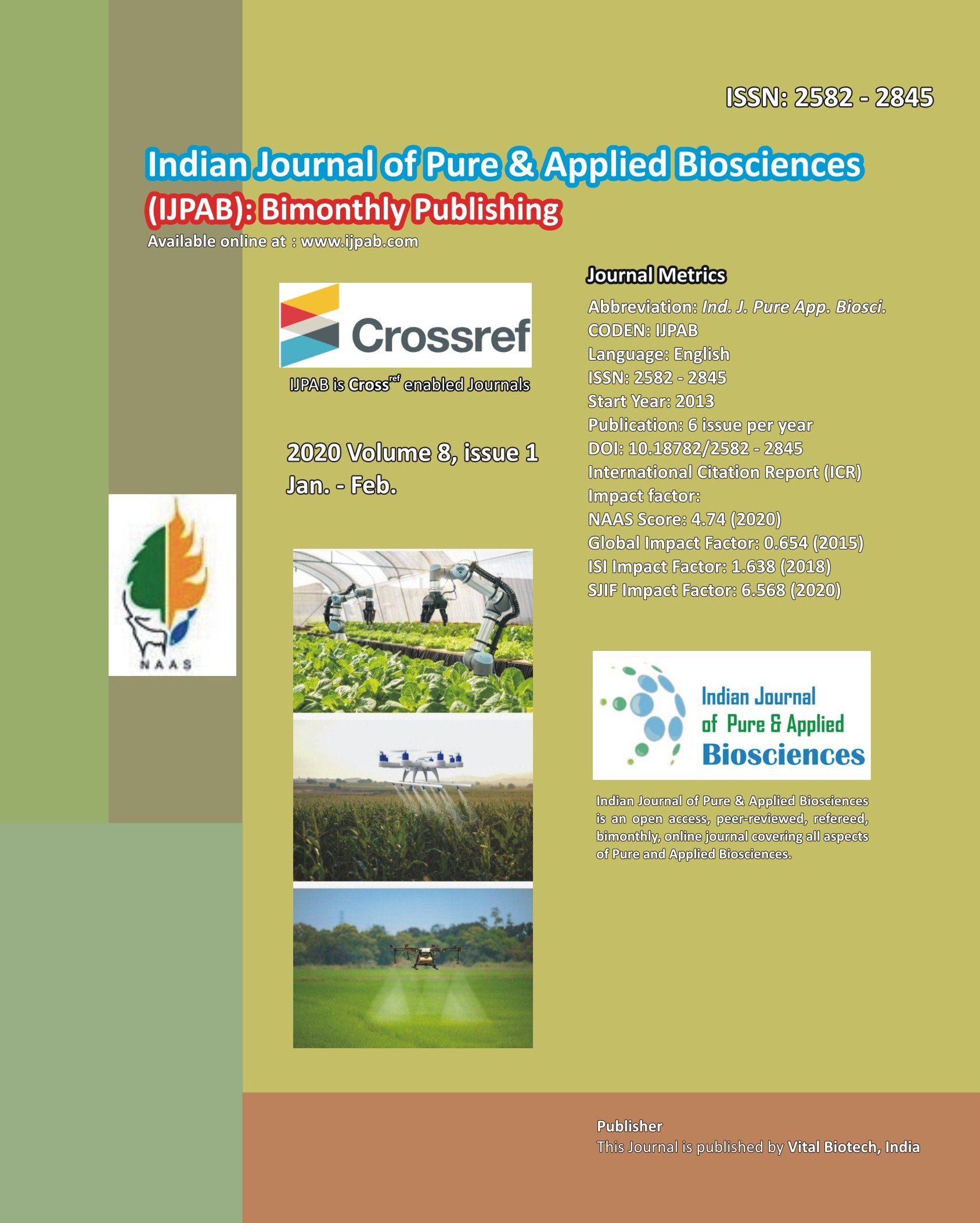
-
No. 772, Basant Vihar, Kota
Rajasthan-324009 India
-
Call Us On
+91 9784677044
-
Mail Us @
editor@ijpab.com
Indian Journal of Pure & Applied Biosciences (IJPAB)
Year : 2020, Volume : 8, Issue : 1
First page : (26) Last page : (31)
Article doi: : http://dx.doi.org/10.18782/2582-2845.7922
An Economic Analysis of Hybrid Water Melon Seed Production in Koppal District of Karnataka
Manjunatha Paled1* and S. S. Guledagudda2
1Ph. D. Scholar, 2Professor,
Department of Agricultural Economics, College of Agriculture,
Dharwad (UAS Dharwad) - 580 005, Karnataka, India
*Corresponding Author E-mail: manjunathpaled08@gmail.com
Received: 7.01.2020 | Revised: 12.02.2020 | Accepted: 18.02.2020
ABSTRACT
The present study was conducted in Koppal district of Karnataka. This study is based on primary data collected from a sample of 32 farmers through personal interview method. Tabular analysis, budgeting technique and Cobb-Douglas production function were applied to study the effect of various inputs on hybrid water melon seed production. Results revealed that per acre labour utilization was 149.82 mandays. Per acre total cost was found to be ₹ 67,110, which includes variable cost (₹ 62,553) and fixed cost (₹ 4,557). Among variable costs, expenditure on human labour was highest (₹ 26,941). Per acre gross return, net return over variable cost and net return over total cost realised were ₹ 1,14,859, ₹ 52,306 and ₹ 47,749 respectively. Cost of production was ₹ 754.89 per kg seeds and return per rupee of expenditure was ₹ 1.71. The output elasticities of human labour (0.81) found to be significant at one per cent. The output elasticities of bullock and machine charges (0.45), irrigation (0.86) and FYM (-0.11) were found to be significant at five per cent. The coefficient of multiple determination (R2) was 0.86. The sum of elasticities (∑bi) was 1.43 which indicated an increasing return to scale. The ratio of MVP to MFC in case of human labour, bullock and machine charges, fertilizers and micronutrients, and irrigation, were 3.46, 19.91, 2.07 and 77.82 respectively.
Keywords: Cost, Hybrid seed, Human labour, Input use, Return
Full Text : PDF; Journal doi : http://dx.doi.org/10.18782
Cite this article: Paled, M. & Guledagudda, S.S. (2020). An Economic Analysis of Hybrid Water Melon Seed Production in Koppal District of Karnataka, Ind. J. Pure App. Biosci. 8(1), 26-31. doi: http://dx.doi.org/10.18782/2582-2845.7922

